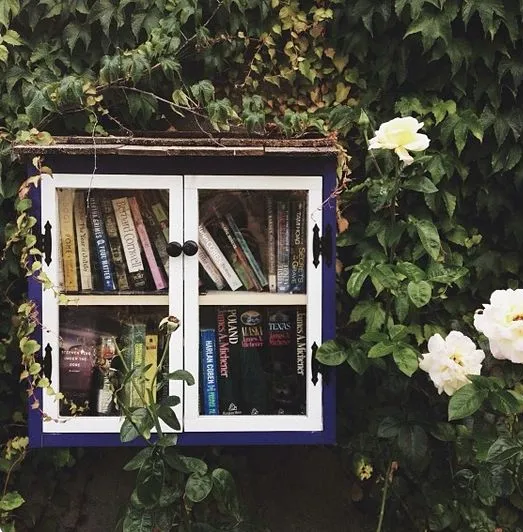
7 Ways To Organize Your Books (Other Than Alphabetically)
This content contains affiliate links. When you buy through these links, we may earn an affiliate commission.
I just recently moved and like a lot of book lovers, the greatest boon of moving was my books that came along. There’s a surprisingly large box in the new house marked “Mostly Poetry” and cook books have now been scattered among travel nonfiction. It’s time again to arrange, reconfigure and kiss each cover as I go. So, I need to think my reorganization through.
Of course, you can always organize by alphabetization of author or title. You know– the normal way. Should this be our fall back? I find more and more that alphabetization is not going to work for me, and here’s another Rioter writer who agrees. I can’t maintain it. In fact, I’d rather eat my own hand. Other Rioters have let us in on their bookshelf look, and it seems like consistent organization for consistent readers is going to be a problem no matter what.
Most people end up down a different path: general subject. This is how I’ve worked in the past– the “Oh yes, that shelf holds fiction classics. That one contains all nonfiction by women” way. There is no rhyme or reason to this method beyond your own brain’s patterning, so there is a danger too. Can you make a shelf make sense? If someone else must also use your shelf space, can you make it work?
Other book lovers/interior designers have talked about color-organization. I get that this is a great Pinterest concept that was trending across the Internet for a while. Check out the example here from Matilda’s Shelf. Look at that thing. It is a beautiful option when done well. But, I can’t imagine trying to find a book of poetry in a large collection of color-coded books. Here’s an article from Slate saying that it’s worth the beauty to have the books be out of logical order. I am not convinced.
So the question is: How else can one organize home books?
- By height. I know. This sounds ridiculous, but especially for those out there with design and art books, height and depth of book binding can vary significantly. For poetry and plays, tiny seems to be the style. And, in certain realms (ahem..IKEA), book shelf dimensions don’t necessarily take into account the unusual sizes. Sometimes you’d love to organize your books by color, but that dang Tufte book from graduate school (The Visual Design of Quantitative Information) just won’t fit anywhere. And Nikky Finney’s book of poetry (The World Is Round) just keeps slipping away between the rest. Sometimes, it has to be by height.
- Old Dewey Decimal. In theory, if you are driven enough to categorize your books with Dewey’s system in your mind, then nothing will necessarily be lost. EVER. It has a speed that basic alphabetization doesn’t have, but a labeling system that can be rough on covers and rough on the mind. And, of course, an age-old system always has its downfalls.









